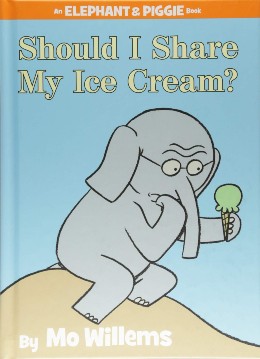“I Scream, You Scream, We All Scream for Ice Cream” was a popular song, first published in 1927.
It has remained a part of popular culture even without the rest of the song. It is also a tongue twister. But more about that next blog!
You may have guessed… July is National Ice Cream Month and National Ice Cream Day is Sunday, July 18! Isn’t this a great time to cool off with our favorite frozen treat?
LET’S TAKE A SURVEY:
- What’s your favorite flavor?
- Do you like your ice cream in a cone or a dish?
- What’s your favorite cone? Cake, waffle, or sugar?
- What’s your favorite topping on your ice cream?
Make a list of other questions. Survey at least 10 people.
- You can make a graph of the answers.
- Find the percents.
- If you ask 40 more people, can you estimate what you think the totals will be?
MAKING HOMEMADE ICE CREAM
We headed to the kitchen to gather the following supplies:
- One small Ziploc baggie (quart or sandwich size)
- 1/2 cup of milk (whole milk or cream work best, but any variety will be fine)
- 1 Tbsp. sugar
- 1/4 tsp. vanilla
- One gallon-size Ziploc bag
- 8-10 cups of ice
- 6 Tbsp. salt
Once you have all of the supplies ready, follow these directions to make a delicious science ice cream in a bag:
- Add milk, sugar, and vanilla to the small baggie. Seal the bag, being careful to release excess air.
- Add ice and salt to the bigger baggie.
- Place the small baggie into the large bag of ice and salt. Seal the large bag.
- Shake for about 5 minutes or until the milk mixture turns into a soft solid.
- CAREFULLY open up the large bag, remove the small bag and rinse it off quickly and thoroughly in cold water (pay special attention to rinse off the opening of the baggie). Without this step, salt may get into the ice cream, which completely spoils it! (I know from experience.)
- Either grab a spoon and eat your ice cream right out of the bag or pour your ice cream into a bowl. Top with sprinkles and toppings of your choice and enjoy!
THE SCIENCE OF HOMEMADE ICE CREAM
To make any variety of homemade ice cream, the milk needs to be partially frozen. Putting milk directly in the freezer and leaving it there makes the milk freeze solid, which is no good. When you try to eat the ice cream it’s no longer creamy and smooth. It gets all icy and crystal-y and weird.
Water freezes at 32°F, but because milk contains proteins and fat it freezes at a lower temperature. This means that trying to freeze milk with ice cubes won’t work either. You need to add a special ingredient to your ice cubes to make a mixture that is even colder than ice alone. Ready for the secret ingredient? I’ll give you a few clues. It’s white. It’s something almost everyone has in their kitchen. It tastes yummy on popcorn with butter. It’s….SALT!
When salt is added to ice, it lowers the freezing point of the ice, making it melt. This leaves a salty-icy-watery mixture that is much colder than 32°F. The temperature of the salty mixture is close to 0°F! (You can verify this with a thermometer.) This temperature is cold enough to freeze milk into homemade ice cream in less than 10 minutes without freezing it solid. https://sciencekiddo.com/science-ice-cream/

Ice Cream Summer by Peter Sis is a book about a young boy who convinces his Grandpa he deserves a special trip for the summer. Find all the ways ice cream is incorporated into the pictures! Ages 4 – 8.

Ice Cream Soup by Ann Ingalls is about making an ice cream cake, but you add too much stuff! Perfect for beginning readers with rhyming text, sight words, numbers, and colors! Ages 5 – 6.

Should I Share My Ice Cream? by Mo Willems is an Elephant and Piggie Book. It’s a perfect drama for hot weather! Ages 3 – 5.

In Nancy Drew and The Clue Crew #2 Scream for Ice Cream by Carolyn Keene, Nancy and her friends about to enter an ice cream contest. Their entry is called Clue Berry. But… a friend’s secret recipe goes missing and Nancy suspects someone is up to no good! Ages 6 – 9.

Ice Cream Cones for Sale! by Elaine Greenstein is about the great debate over who invented the ice cream cone. Ages 4 – 8.
Focus Foundation specializes in X & Y Chromosomal Variation Disorders such as Klinefelters 47, Testosterone, Dyslexia, Dyspraxia, ADHD and other Genetic Disorders. For more information please contact us or schedule a consultation at: thefocusfoundation.org/contact-us







